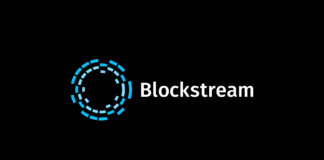The cryptocurrency and blockchain space is no stranger to high-profile security incidents, and the recent Holograph hack has once again thrust the issue of on-chain security into the spotlight. This attack, orchestrated by a former contractor of the protocol, resulted in the minting of a staggering 1 billion HLG tokens, causing a devastating blow to the project’s market valuation. As the industry grapples with the fallout, it becomes imperative to dissect the incident, understand the vulnerabilities exploited, and explore the broader implications for the decentralized finance (DeFi) ecosystem.
The Holograph Hack: A Detailed Timeline
The Exploit Unfolds
On June 13, 2024, the Holograph protocol, known for its cross-chain tokenization capabilities, fell victim to a critical smart contract exploit. An unauthorized actor, believed to be a former developer on the project, managed to bypass the access controls on the protocol’s mint function and execute a series of transactions to create 1 billion HLG tokens.
The immediate impact of the exploit was a sharp decline in the value of HLG tokens. Within the first nine hours of the attack, the token price plummeted by approximately 80%, from around $22 million to less than $10 million, resulting in a staggering loss of over $12 million in market capitalization.
Blockchain analytics firm QLUE’s investigation revealed the precise flow of the stolen funds. The attacker quickly converted a portion of the minted tokens into USDT, a popular stablecoin, and then further converted the USDT to Ethereum. The exploiter then distributed the stolen Ethereum across multiple addresses, with a portion being sent to Tornado Cash and Railgun, known for their privacy-enhancing features.
Holograph’s Response
In the wake of the incident, the Holograph team sprang into action. They claimed to have identified and patched the vulnerability in the smart contract, and collaborated with cryptocurrency exchanges to freeze the accounts associated with the attacker’s wallet. Additionally, Holograph initiated a thorough investigation, involving law enforcement, to track down the perpetrator of the attack.
Decentralizing Control: A Safeguard Against Insider Threats

The Holograph hack highlights the importance of proper access control and the vetting of development team members. In this case, the attacker’s address was approved to call the protocol’s mint function, granting them the ability to exploit the system. To mitigate such risks, the implementation of a multi-sig wallet for privileged functionalities, such as minting and burning, is a recommended best practice.
By requiring multiple private key holders to collaborate and collude in order to execute privileged actions, the risk of a malicious insider taking advantage of their access is significantly reduced. This decentralization of control serves as a crucial safeguard against insider threats, which can have devastating consequences for DeFi projects.
The Broader Implications: Persistent DeFi Risks
The Holograph hack is not an isolated incident; it is part of a broader trend of security breaches plaguing the DeFi space. Recent examples include the $6.8 million exploit on DEX Velocore and the two separate attacks on the Ethereum-based lending protocol UwU Lend, resulting in losses of $3.72 million.
These incidents underscore the persistent risks associated with decentralized finance. Whether facilitated by insider jobs or stemming from weak security measures, such malicious activities continue to pose a significant challenge to the industry. As the DeFi ecosystem grows, the need for robust security protocols and proactive measures to combat these threats becomes increasingly paramount.
The Role of Blockchain Analytics in Investigations
In the wake of DeFi exploits like the Holograph hack, blockchain analytics tools like QLUE have emerged as indispensable investigative aids. These advanced analytics platforms can assist law enforcement in tracing the flow of stolen funds, expediting case closure, and developing stronger evidence to recover the pilfered assets.
By leveraging QLUE’s sophisticated transaction analysis capabilities, investigators can uncover the source and destination of stolen cryptocurrencies, track their movement across wallets and exchanges, and ultimately build a comprehensive case to pursue legal action and asset recovery. As the DeFi landscape continues to evolve, the importance of such blockchain-based forensic tools in combating financial crimes will only grow.
Related Read: Holograph Hack: 80% Drop in 9 hours after exploiter mints 1B additional HLG
Restoring Trust and Investor Confidence
The Holograph hack not only resulted in significant financial losses but also severely undermined investor trust in the protocol. The rapid devaluation of HLG tokens and the attacker’s ability to quickly convert a portion of the stolen funds into other cryptocurrencies further destabilized the market.
In response, Holograph has pledged to implement a compensation plan to mitigate the financial impact on affected users. However, regaining the confidence of the broader crypto community will require a multifaceted approach. Transparent communication, robust security audits, and a clear demonstration of the protocol’s resilience will be crucial in rebuilding trust and reassuring investors.
The Evolving Landscape of DeFi Security
The Holograph hack serves as a stark reminder that the DeFi ecosystem remains vulnerable to sophisticated attacks, even from within the development teams themselves. As the industry continues to evolve, the need for comprehensive security measures, rigorous auditing processes, and effective governance models becomes increasingly apparent.
Protocols must prioritize the implementation of access controls, multi-sig wallets, and other security best practices to safeguard against insider threats and external exploits. Additionally, the wider crypto community must remain vigilant, actively engaging in security research, sharing knowledge, and collaborating to identify and address emerging vulnerabilities.
The Importance of Smart Contract Audits
While the Holograph hack was facilitated by a malicious insider, the importance of thorough smart contract audits cannot be overstated. Even the most experienced development teams can inadvertently introduce vulnerabilities into their code, which can be exploited by determined attackers.
Regular, independent audits conducted by reputable security firms are crucial in identifying and addressing potential weaknesses in smart contract design and implementation. These audits not only help to mitigate the risk of exploits but also instill confidence in the project’s stakeholders, including investors and users.
Decentralization and the Pursuit of Accountability
The Holograph hack underscores the challenges inherent in maintaining accountability within decentralized systems. As the industry continues to evolve, the need for robust governance models and effective dispute resolution mechanisms becomes increasingly apparent.
Decentralized autonomous organizations (DAOs) and other decentralized governance structures offer promising avenues for addressing these challenges. By empowering community members to participate in decision-making processes and hold development teams accountable, these models can help to foster a more transparent and resilient DeFi ecosystem.
The Convergence of AI and Crypto
The Holograph hack occurred within a broader context of the growing convergence between artificial intelligence (AI) and the cryptocurrency/blockchain space. Initiatives like the launch of GPT-4 in 2023 and the currency issuance of WorldCoin have reignited the AI + Crypto craze, raising questions about the potential synergies and risks associated with this convergence.
As the industry continues to explore the possibilities presented by the combination of these transformative technologies, it will be crucial to address the security implications and ensure that the integration of AI and crypto does not introduce additional vulnerabilities or exacerbate existing ones.
Emerging Crypto Trends and the Holograph Incident
The Holograph hack took place against the backdrop of a dynamic and rapidly evolving cryptocurrency landscape. Concurrent with the incident, the market has witnessed the successful presale and launch of Pandoshi, a rising cryptocurrency gaining attention for its commitment to innovation and decentralization in the decentralized finance (DeFi) space.
These emerging trends and the continued growth of the crypto ecosystem underscore the importance of maintaining robust security protocols and fostering a culture of transparency and accountability. As the industry matures, the lessons learned from the Holograph hack can inform the development of more resilient and trustworthy DeFi projects, ultimately strengthening the overall crypto landscape.
The Path Forward: Strengthening On-Chain Security
The Holograph hack serves as a sobering reminder that the DeFi ecosystem remains vulnerable to sophisticated attacks, even from within the development teams themselves. As the industry continues to evolve, the need for comprehensive security measures, rigorous auditing processes, and effective governance models becomes increasingly paramount.
By prioritizing the implementation of access controls, multi-sig wallets, and other security best practices, protocols can mitigate the risk of insider threats and external exploits. Additionally, the wider crypto community must remain vigilant, actively engaging in security research, sharing knowledge, and collaborating to identify and address emerging vulnerabilities.
Through a concerted effort to strengthen on-chain security, the DeFi industry can regain the trust of investors and users, paving the way for a more resilient and sustainable future. The lessons learned from the Holograph hack must serve as a catalyst for the industry to collectively address the persistent risks and fortify the foundations of the decentralized finance ecosystem.
Conclusion
The Holograph hack stands as a sobering reminder of the ongoing security challenges facing the DeFi space. By exploiting a vulnerability in the protocol’s smart contract, a former contractor was able to mint 1 billion HLG tokens, causing a devastating impact on the project’s market valuation and investor confidence.
As the industry grapples with the fallout, it becomes clear that the pursuit of robust on-chain security must be a top priority. Decentralizing control, implementing comprehensive auditing processes, and fostering a culture of transparency and accountability will be crucial in restoring trust and building a more resilient DeFi ecosystem.
The convergence of AI and crypto, along with the emergence of new projects like Pandoshi, underscores the dynamic and rapidly evolving nature of the cryptocurrency landscape. Navigating this landscape will require a steadfast commitment to security, innovation, and the continuous improvement of DeFi protocols.
Through a collaborative effort, the crypto community can learn from the Holograph incident, identify and address emerging vulnerabilities, and pave the way for a more secure and prosperous future. By prioritizing on-chain security, the DeFi industry can regain the trust of investors and users, unlocking the full potential of decentralized finance.













